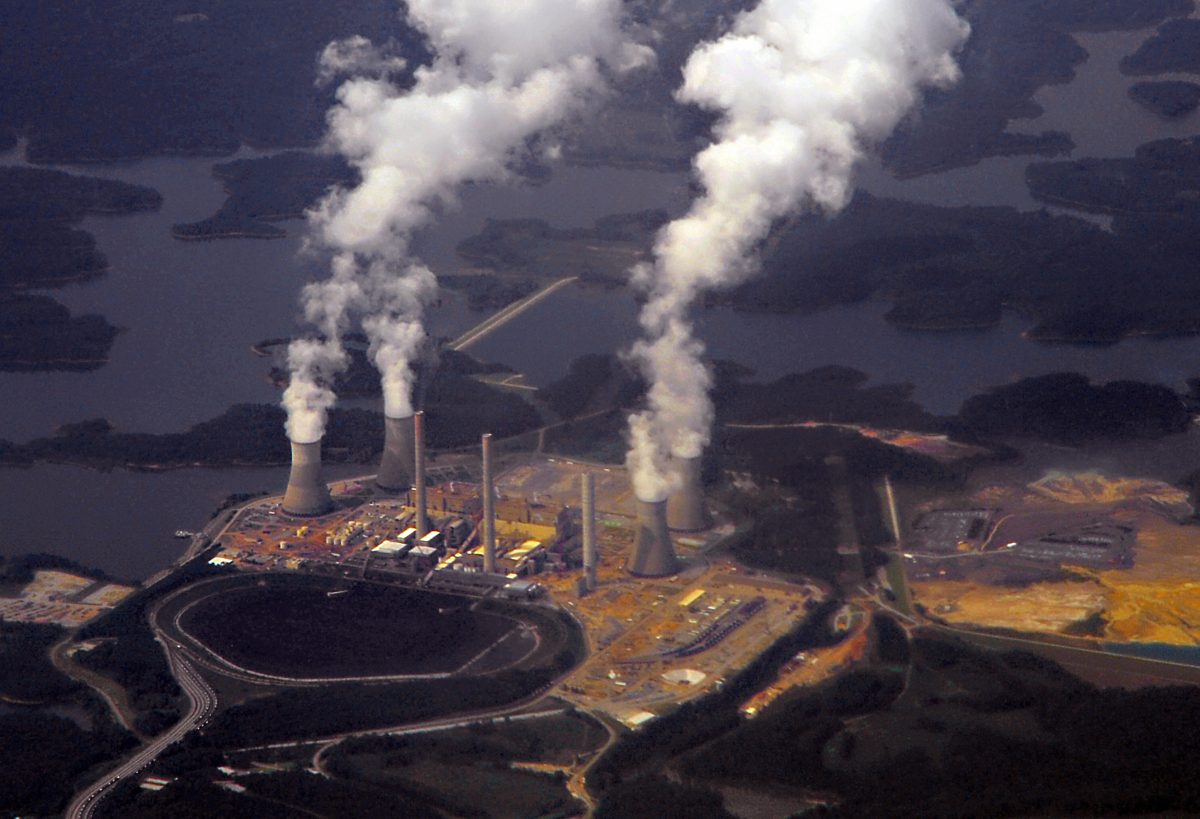
Next week’s primary election in Georgia has made national news as a potential bellwether of how voters view former President Donald Trump and his false claims that the 2020 presidential election in the state, which he lost, was stolen. Far from the national news, lower down the ballot, that same election on May 24 will also help shape where and how the state gets its electricity—and by extension whether the U.S. meets its goals of cutting the emissions that cause climate change.
Two seats are on the ballot in the state’s Public Service Commission (PSC). It’s a wonky agency with a wonky name, but as the regulator of the state’s electric utility companies, the PSC will play a critical role helping determine whether Georgia sources electricity from renewable energy or relies more heavily on natural gas as the state’s utilities chart a course away from coal-fired power.
Last month at a conference, I met Chandra Farley, a Democratic candidate running to represent Atlanta and its surroundings on the PSC. Despite the inherent weediness of the agency, and the often distant nature of the climate problem more broadly, Farley is determined to make the race a priority for voters by focusing on how energy challenges affect people’s daily lives. Instead of beginning our conversation with talking points about climate change, she framed her race to me as an opportunity to address runaway energy costs in local communities and “take back power for the people.”
“The entire energy system needs a fundamental shift,” she says. “But that fundamental shift has to be centered on addressing the disproportionate impacts on people.”
Whether she succeeds in engaging voters and changing the shape of the Republican-majority commission will impact not only the lives of the people on the ground who have recently experienced a sharp rise in electricity prices but also the trajectory of the state’s greenhouse gas emissions. Georgia is not alone. In cities, counties, and states across the country, other races just like Farley’s will help shape the future of U.S. energy policy. Unfortunately, too few voters are paying attention.
A version of this story first appeared in the Climate is Everything newsletter. To sign up, click here.
In the broadest sense, this is a critical moment for any climate policy. The Intergovernmental Panel on Climate Change, the U.N.’s climate science wing, has warned that the chance to seriously address the issue and bring down emissions to levels consistent with the Paris Agreement is “narrow.”
Perhaps nowhere is that window more apparent than in the places that are actually building energy infrastructure—and Georgia is a prime example. Earlier this year, Georgia Power, the largest electric utility in the state, announced plans to wean the state off of coal-fired power plants by 2035, a welcome move given that coal is the most-polluting source of electricity. But, while this means Georgia Power will expand its use of renewable energy, its current plans also call for a significant uptick in natural gas, which climate advocates say is inconsistent with climate science due to the potent methane emissions released from the fossil fuel. As the regulator of state electric utilities, the Georgia Public Service Commission oversees Georgia Power’s plans. Right now, the commission is composed of just five Republicans members, all of whom have poor positions on climate policy say some environmental advocates.
Farley wants to change the direction of the commission—and energy policy in Georgia—by expanding opportunities for local solar and energy efficiency in low-income communities. Both would have the effect of bringing down energy costs while reducing emissions in the state. That’s a clean-energy argument that people can get behind, she says. “If you really want to talk about jobs, you’d be talking about investing more in distributed clean energy, like small-scale solar, neighborhood-sited solar, energy efficiency—things that actually create jobs.”
There are other local races like this across the country. The Arizona Corporation Commission, the state’s equivalent of the PSC, is electing two members this year after narrowly rejecting a plan in 2021 to commit the state to 100% carbon-free energy. In Nevada’s Clark County, home to Las Vegas, voters will elect a county commissioner in a swing district; whoever wins will help determine what kinds of energy projects can be developed in the region. In Nebraska, where officials last year adopted a goal to eliminate power-plant emissions, elected supporters of clean energy are facing an emboldened opposition that could seek to slow the progress. In total, voters in 10 states will elect officials to their utility commissions this year with 17 seats up for election in those states, according to data from S&P Global.
Those are just the races where clean energy policy is most obviously connected to the outcome. Governors appoint public utility commissioners in many other states—and, of course, state legislatures can pass significant energy rules, too. All of this can add up to a lot: at the beginning of 2021 a third of people in the U.S. lived in a place committed to 100% clean energy as a result of state and local policies, according to the League of Conservation Voters.
Like nearly everyone who works on climate issues, people often ask me “what can I do?” Learning about the local policy issues is a good place to start.
More Must-Reads from TIME
- Inside Elon Musk’s War on Washington
- Meet the 2025 Women of the Year
- The Harsh Truth About Disability Inclusion
- Why Do More Young Adults Have Cancer?
- Colman Domingo Leads With Radical Love
- How to Get Better at Doing Things Alone
- Cecily Strong on Goober the Clown
- Column: The Rise of America’s Broligarchy
Write to Justin Worland at justin.worland@time.com